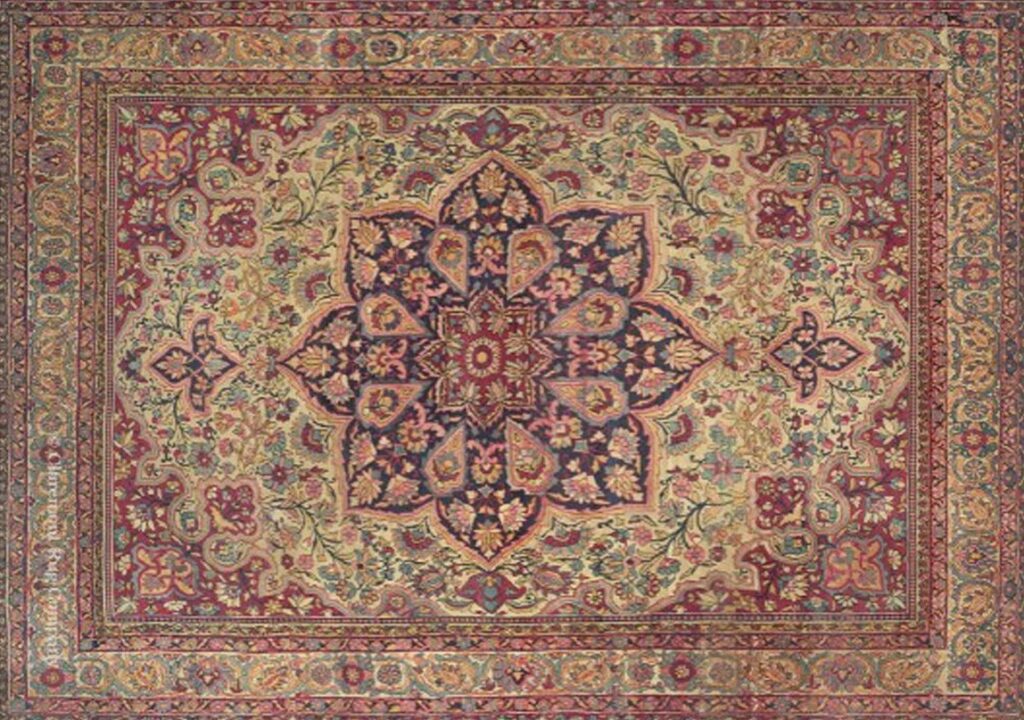Right in the middle of the Lut desert in Iran and Qanat-watered, orchards of Ravar ripens the sweetest of pomegranates. This town is well-known nationally, as much as its international reputation for exquisite Ravar rug.
Ravar is in the middle of a vast salty Lut desert in central Iran. The name’s literal means “Emptiness,” which gives you a genuine picture of how this place looks and feels. Lut is a UNESCO natural world heritage site with incredible landscapes, mounds, and barrows. In this hot desert, ancient Zoroastrians would expose the corpses.
It also has many mines of brimstone and gold and vast hills on top mounds. It’s good to know that the hottest place on earth is in Lut. The locals call there “Gandom Beriyan,” which is quite self-explanatory because it means Roasted Wheat. And Ravar is the nearest dwelling place to this sizzling spot.
Ravar residents used to weave canvas fabric. Still, they transitioned mostly to rug weaving during the 19th century while the Kerman rug industry boomed the western markets.
Technical Aspects and Structure of The Ravar Rug
The rug market considers Ravar rug [aka Lavar rug] as the finest of Kermans. Their knots are asymmetrical/Persian) and in triple-wefts. The top-grade knot count reaches 510,000/m2. In terms of material, warp and weft consist of cotton, and the pile is woolen.
There is a unique and probably ancient structure in Ravar rug called the “Vase technique.” It consists of three rounds of weft between rows of knots. The first and third are typically woolen at high tension. And, the second one is at low tension and usually made of silk or cotton.
Antique rugs benefit from Kork [aka Kerman wool], a fine and thin but not fragile goat hair. Rug weavers use Kork in warm shawls and rugs. Kork allows them to apply tiny curvilinear patterns in their detailed designs without losing their strength.


Dyeing and Painting of Ravar Rugs
Indigo, cochineal, walnut, weld, pomegranate, vine leaves, straw, and henna boast tones of color on the palette of Ravar rug. They are ideal for loom-drawing painters to create their magnificent pastel colorings. To get a level hue, master dyers dye the wool before spinning.
Ravar rug has an impressive color combination. Vivid tones match the intricate shapes and lines of drawers magically. Moreover, the cochineal-based reds give a unique charm to Damask Roses, which are the most popular motifs in Ravar designs.
Designs and Patterns of The Ravar Rug
Although vast in range, Ravar designs have a vital feature in common: being fully floral.
Flowers, leaves, and blossoms cover every branch of a tree in a prayer design. Finding empty spaces between patterns is a difficult task.
Both central and all-over medallion designs make up the centerpiece in these rugs. Generally, Repeating patterned designs are pretty popular.
Boteh, an ancient Persian motif derived mainly from Kerman shawls, is very common in Ravar rug.
Sabzikar is also a famous Kerman designer whose best interpretations embellish Ravar rug. Most of these rugs have a signature, either that of the weaver or the person to whom the rug was dedicated.


Khazai Rugs in Louisville, KY is the best place to find such amazing Persian rugs at the lowest prices possible. Visit our website or rug store today and explore our massive collection of irresistible area rugs.

